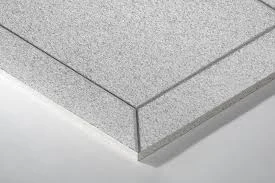10 月 . 14, 2024 00:02 Back to list
how to install an access panel in the ceiling
How to Install an Access Panel in the Ceiling
Access panels are essential for simplifying maintenance and providing easy access to areas behind walls or ceilings, such as plumbing, electrical systems, or HVAC components. Installing an access panel in the ceiling may seem intimidating, but with the right tools and steps, it becomes a straightforward task. In this guide, we will outline how to install an access panel in the ceiling with clarity and ease.
Tools and Materials Needed
Before starting the installation process, gather the necessary tools and materials, including
- Access panel (make sure it fits your opening) - Measuring tape - Level - Stud finder - Pencil - Drywall saw or utility knife - Screws (usually included with the panel) - Screwdriver - Safety goggles - Dust mask
Step 1 Choose the Location
The first step in installing an access panel is choosing the right location. Consider what you need access to behind the ceiling and ensure it is not obstructed by beams or components that could make access difficult. Areas should also be convenient for future inspection or repair needs.
To help identify any potential obstacles, use a stud finder to locate joists in the ceiling. Mark their locations lightly with a pencil to visualize your area better.
Step 2 Measure and Mark the Opening
Once you have selected the location, it’s time to measure and mark the dimensions for the access panel. Most standard access panels are available in sizes like 12x12 inches or 14x14 inches, so make sure to choose a panel that will comfortably allow access to the area you need.
Using your measuring tape, measure out the dimensions of the access panel and mark the edges with a pencil. Use a level to ensure that your lines are straight and accurate. Double-check the measurements before proceeding to cut the drywall.
Step 3 Cut the Drywall
With the markings clearly defined, it's time to cut the drywall. Using a drywall saw or utility knife, carefully cut along the marked lines. Start by making small incisions along the edges, and then gently cut away the material. Be cautious not to apply too much force or cut too deeply, as you may damage any electrical or plumbing lines behind the drywall.
how to install an access panel in the ceiling

Once you’ve made your cuts, remove the drywall piece carefully and dispose of it properly.
Step 4 Insert the Access Panel
Now that you have a hole in the ceiling, it’s time to insert the access panel. Most access panels come with clips or hinges to secure them in place. Position the access panel into the opening you’ve created, ensuring it is flush with the ceiling line.
If your panel requires additional support, make sure to secure it to the joists or studs as necessary. Use screws to affix the panel to the surrounding drywall, ensuring that it remains stable and secure.
Step 5 Ensure a Flush Fit
To ensure a clean finish, double-check that the access panel is flush with the ceiling. If necessary, adjust it by tightening or loosening the screws accordingly. Once it is aligned perfectly, you are ready for the final touches.
Step 6 Caulk and Paint (Optional)
For a seamless appearance, consider using caulk around the edges of the access panel to fill any gaps. This not only enhances the aesthetics but also helps to contain dust or insects that might creep in. Once the caulk is dry, you can paint the panel to match the surrounding ceiling, making it less conspicuous.
Step 7 Final Inspection
Finally, the last step is to perform a quick inspection of your work. Open and close the access panel to ensure it functions correctly, and check to see that everything looks neat and tidy. Make sure that there is ease of access to the area behind the panel as planned.
Conclusion
Installing an access panel in the ceiling can greatly enhance your home’s functionality and ease of maintenance. By following these simple steps, you can successfully complete the installation, allowing easy access to essential areas of your home for repairs or inspections. Remember to follow safety protocols and take your time to ensure a precise and professional-looking installation. Enjoy the peace of mind that comes with having an access panel conveniently installed!
-
Revolutionizing Interior Design with Ceilings t grid Suspended SystemNewsOct.29,2024
-
Revolutionizing Ceiling Design with ceiling access panel with Gypsum Tile WaterproofNewsOct.29,2024
-
Revolutionizing Interior Design with PVC Gypsum Ceiling: A Comprehensive GuideNewsOct.29,2024
-
Elevating Interior Design with High quality Mineral Fiber Ceiling TilesNewsOct.29,2024
-
Revolutionizing Interior Design with PVC Gypsum Ceiling: A Comprehensive GuideNewsOct.29,2024
-
Elevating Interior Design with High-Quality Mineral Fiber Ceiling Tiles: A Comprehensive GuideNewsOct.29,2024







